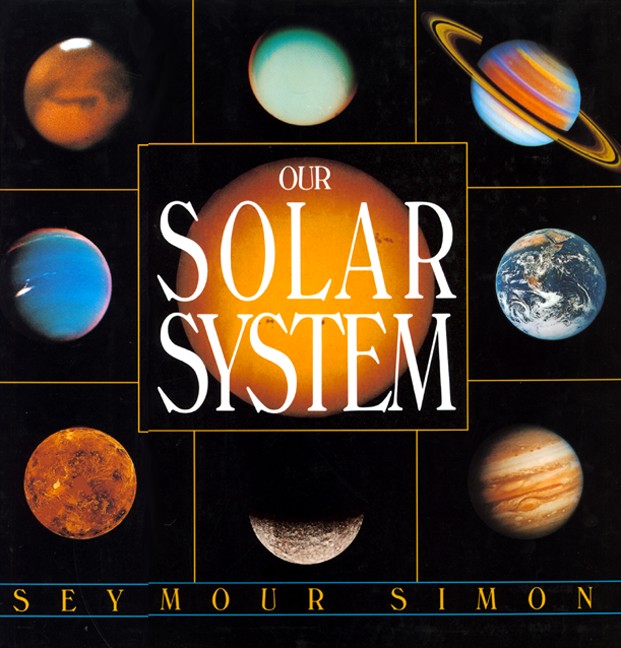
Our Solar System
By Seymour Simon
New York: Morrow Jr. Books
1992
ISBN 0-688-09993-9
Ages 9-12
Simon gives the reader the big picture first-- where our solar system fits in the Milky Way Galaxy. He briefly addresses the hypothesis of how the Solar System was born, then focuses on the individual aspects of the sun and the nine planets that orbit around it. He also includes what he refers to as minor planets called asteroids, and still smaller rocks called meteoroids, as well as many comets that travel around the sun.
Simon includes more information on the Earth than any other planet, covering the unique aspects of it such as the presence of water, an atmosphere that supports life, weather systems, its crust, and its satellite: the moon. He devotes ten pages to Earth, and from two to six pages on the other planets.
As for accuracy and authenticity, Simon taught science for 23 years in New York public schools, and has written over 200 books. Kirkus Reviews says, "Seymour Simon may have done more than any other living author to help us to understand and appreciate our planet and our universe" (Vardell 2002). The book doesn't have a table of contents, which would've been nice to be able to peruse the contents briefly as well as quickly look up the page number on a particular planet, etc. It does have an index, though, which does provide the page numbers. A glossary would've been useful, too in defining the different terms. I think that is almost a necessity for science books, no matter how basic.
This book is fine for a basic overview on our Solar System and provides enough information for a simple report. But the beautiful pictures and interesting facts make for fun site-seeing and reading, too.
Vardell, Sylvia. 2002. Major authors - featured author: Seymour Simon.
Lecture notes - Literature for Children and Young Adults 5603-20. TWU
Home